With just a month remaining of my study abroad semester in Siena, Italy, I’ve found myself reflecting on my time here, thinking about everything I’ve learned since arriving nearly three months ago, and everything I want to share with those considering studying abroad in this wonderful city in the future.
Siena, nestled in the heart of Tuscany, is often called Italy’s medieval gem. The inimitable Henry James once described Siena as a “dusky labyrinth”—a phrase that rings true when you find yourself weaving through the city’s narrow alleyways and tall brick buildings. There is so much history in Siena—a city first settled in the time of the Etruscans (c. 900-400 BC)—you can almost feel it pooling at your feet as you walk, your every footprint layered over centuries of lives, stories, and time.
But just beyond Siena’s medieval walls lies a different kind of beauty: rolling green hills, olive groves, terraced fields, and the dark-green shadows of cypress trees—what Maurice Druon once called “one of the most beautiful countrysides in the world.” Looking inwards, at Siena’s center is the Piazza del Campo, where locals and tourists gather to sit on the sun-warmed tiles, enjoy a meal in the restaurants along its perimeter, or gaze up at the looming Torre del Mangia. As Hisham Matar once wrote, Il Campo is “where Siena reaches the middle of itself, where it pours out completely.” Il Campo has long been likened to a seashell or an oyster in literary descriptions of Siena. Hawthorne, too, saw it this way, calling it “the life today within the shell of a time past.” It’s hard not to fall in love with Siena. I certainly did. It’s stunning, slow-paced, deeply historic—and before long, it felt like home.
Still, as I look down the ever-shortening tunnel of my time in this beautiful place, I want to offer some advice to anyone considering studying abroad here. Just like choosing a college, picking the right study-abroad location requires intention and self-awareness. Siena is perfect for some people, but it might not be the right fit for everyone. What makes it special—its quiet streets, its preserved medieval character, its slower rhythm of life—might not appeal to those looking for a faster pace or more modern setting. Here are some tidbits I wish I’d known before coming to Siena:
One of the first things I realized after arriving in Siena is that the nightlife scene revolves almost entirely around bars. Personally, I love it—I’ve spent countless fun nights sipping spritzes with friends, playing cards at The Irishmen, and belting out karaoke at San Paolo. There’s a warmth and ease to it all. But if you’re someone who thrives in a high-energy club environment, you might find yourself catching the train to Florence on weekends. While Siena does have a few clubs, no one in my program has ventured to them yet, and from what we’ve heard, they’re small and not particularly popular.
That said, Siena nights still buzz with life. People linger in the yawning mouths of bars or spill out into Il Campo with drinks and cigarettes in hand, mingling and hanging out. There’s always something going on—you just have to be okay with a more low-key vibe.
Another thing worth considering: if weekend travel is a big priority for you, Siena might not be the most convenient launchpad. It’s definitely doable, but it’s not the path of least resistance, as it does not have its own airport. Most trips involve a four-hour bus ride to the Rome Fiumicino Airport. Others opt to fly out of Pisa, Bologna, or Florence, which also require extra planning, extra money spent on buses, and extra travel time. So if you’re hoping to hop on a quick plane every weekend, know that there’s often a logistical (and financial) hurdle between Siena and your next destination.
Also important to keep in mind—especially if you're budgeting or thinking carefully about meal expenses—is that living in an apartment means covering all of your meals yourself. Before arriving in Siena, I had the impression that students could eat at the university cafeteria for free or at a significantly reduced cost. In reality, lunch there costs around 8 euros, and you’re limited to choosing one option—either pizza, pasta, or a salad. That price is roughly the same as eating anywhere else in the city.
If you opt for a homestay, you’ll receive breakfast and dinner on most days, which can definitely help with costs. Personally, I love living in an apartment. The locations are amazing—just minutes from the Piazza—and I’ve really enjoyed having roommates and the independence that comes with it. But I do wish I had known ahead of time that there are no meal discounts or included options for apartment-living students. Also worth noting: during IES Abroad field trips, you’re responsible for buying your own lunches. These are small things, but they’re important to consider when planning a study-abroad semester on a budget.
And one last thing: the spring break for IES Siena is only four days long. I wish I’d known this before coming to Siena—it was certainly a letdown to find out, especially since friends in other IES programs get anywhere from a week to two weeks off. Our break runs from April 18–22, which doesn’t leave a ton of time for far-flung adventures. If a long, sunny, beachy spring break is a top priority for you, keep that in mind.
Don’t get me wrong—I truly love studying abroad with IES Siena. I wouldn’t trade this experience for anything. Each day, Siena feels more like home, and the thought of leaving my new home in only a month tugs at me a little more. I’ve met incredible people, enjoyed my classes, and have been fortunate enough to travel on weekends and make unforgettable memories with friends.
That said, I want future students to be as informed as possible when deciding if Siena is the right fit for them. If you’re on the fence, my advice is a wholehearted yes—go for it. It’s been an amazing, life-changing experience, and I feel so lucky to be here. But like any place, it’s not one-size-fits-all. What makes Siena magical for some might not work for others—and that’s okay. The more you know before you come, the better prepared you’ll be to make the most of it.
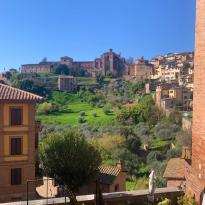
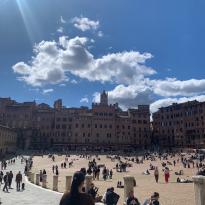
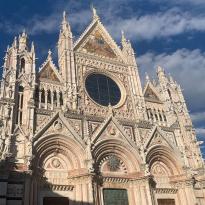
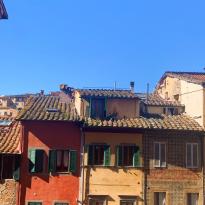
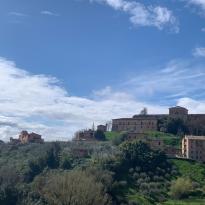

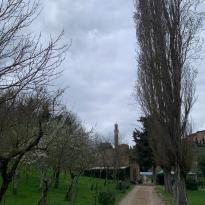


Gail Curtis
Hi! I’m Gail from Rockport, ME, a small, rural town on the coast. Growing up, I fell in love with nature—mountains, woods, and the ocean. As an English major, I’m also passionate about reading and writing, which let me explore the world in new ways!










